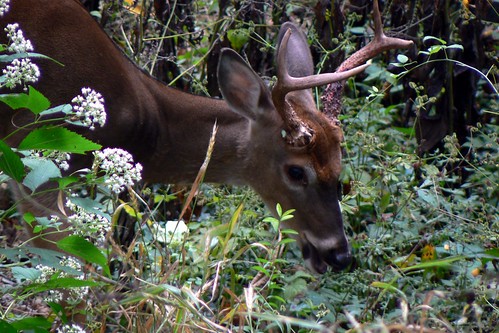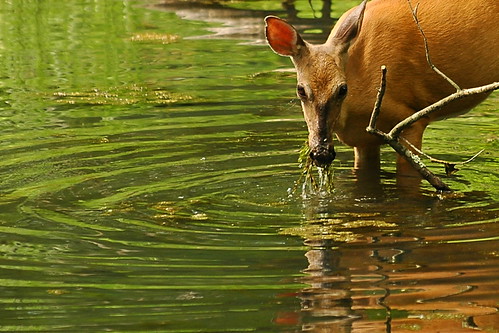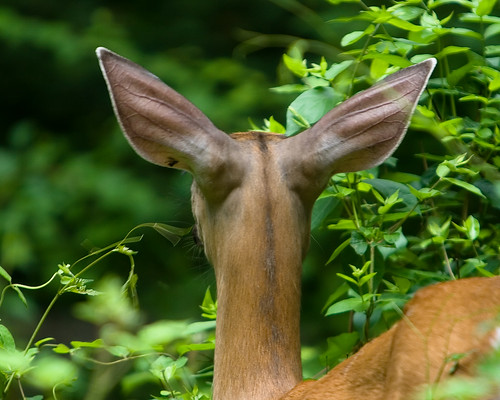 There are far too many deer in Rock Creek Park. I'm not talking about how they leave the park to eat your hostas. They're hurting the park itself. Please take a minute to read this post and do something about it.
There are far too many deer in Rock Creek Park. I'm not talking about how they leave the park to eat your hostas. They're hurting the park itself. Please take a minute to read this post and do something about it.Estimates of how many deer can live sustainably in a forest vary, but the park's science team thinks 15 to 20 deer per square mile is reasonable for Rock Creek Park. Before European settlement of this region, there were even fewer -- maybe 8 to 11 deer per square mile. The number in Rock Creek Park? As of 2007, 82 deer per square mile and growing at 20% per year. Yikes.
At this population level, deer are preventing regeneration of the forest. Tree seedlings get chomped by a passing deer before they can grow large enough to survive. The loss of vegetation can also increase erosion and stormwater runoff, and it destroys cover that protects numerous birds and other animals. Not to mention destroying the shrubs and plants themselves.
 How did we get to this point? First of all, there are no deer predators left in the District, other than cars. Second, ongoing development in the suburbs creates lots of "edge" habitat where deer thrive, while simultaneously reducing hunting. And Rock Creek is part of a long green corridor that reaches into Montgomery County, meaning what is going on up there can affect conditions in the park.
How did we get to this point? First of all, there are no deer predators left in the District, other than cars. Second, ongoing development in the suburbs creates lots of "edge" habitat where deer thrive, while simultaneously reducing hunting. And Rock Creek is part of a long green corridor that reaches into Montgomery County, meaning what is going on up there can affect conditions in the park.In light of all this, the park has developed a new deer management plan. This 400-page report is full of interesting information (including a list of endangered and rare species in the park, bird lists, and maps of dominant vegetation types, which may inspire other posts here soon). But most importantly, it describes four alternatives for dealing with the deer:
- No new action - Monitoring, data management, research, and use of protective caging and repellents in landscaped areas; the deer population would likely continue to grow.
- Non-lethal actions - Very large fenced areas (5% of the park) would allow some forest regeneration while park staff would slowly reduce the deer population through reproductive control. There would still be a lot of damage to unfenced areas in the park while we wait for the population to decline.
- Lethal actions - Killing the deer through sharpshooting (and by capture and killing where sharpshooting would not be appropriate). This would rapidly reduce the deer population to a sustainable level.
- Both lethal and non-lethal actions (the recommended alternative) - quickly reduce the number of deer, following up with population control so they never get back to this point.
 The park is asking for feedback on these options. You can weigh in by mail or online. The comment periods ends on October 2, 2009. If you love Rock Creek Park, please take a minute to submit a comment on the plan. And if you've got another minute, come back here and leave your comment as a comment on this post. We'd love to see what you said!
The park is asking for feedback on these options. You can weigh in by mail or online. The comment periods ends on October 2, 2009. If you love Rock Creek Park, please take a minute to submit a comment on the plan. And if you've got another minute, come back here and leave your comment as a comment on this post. We'd love to see what you said!Like the photos in this post? Mouse over for credits; a click takes you to the photographer on Flickr.


